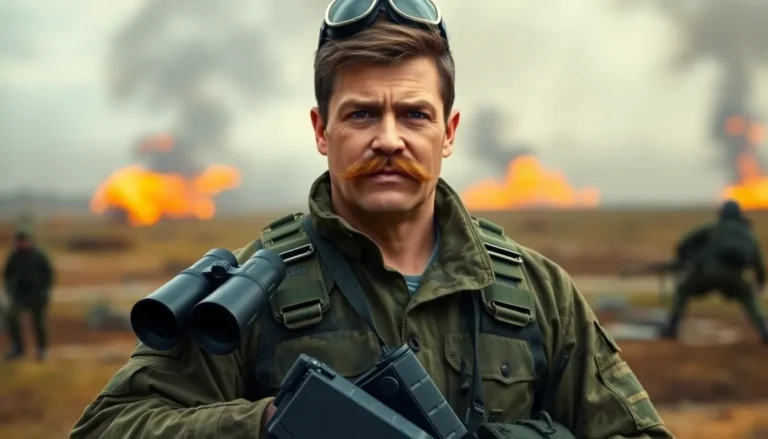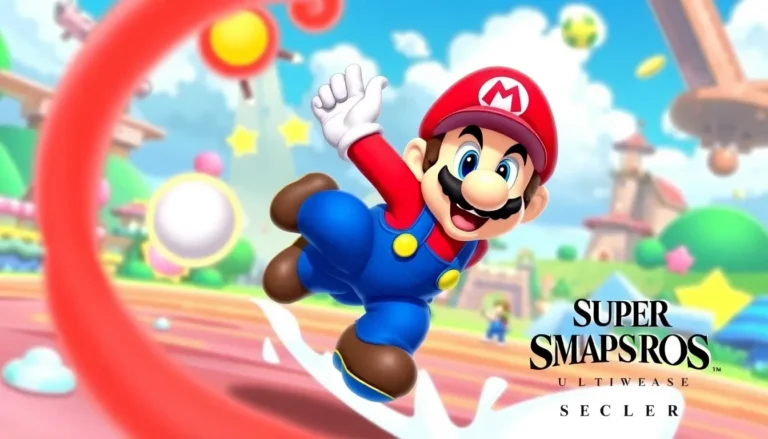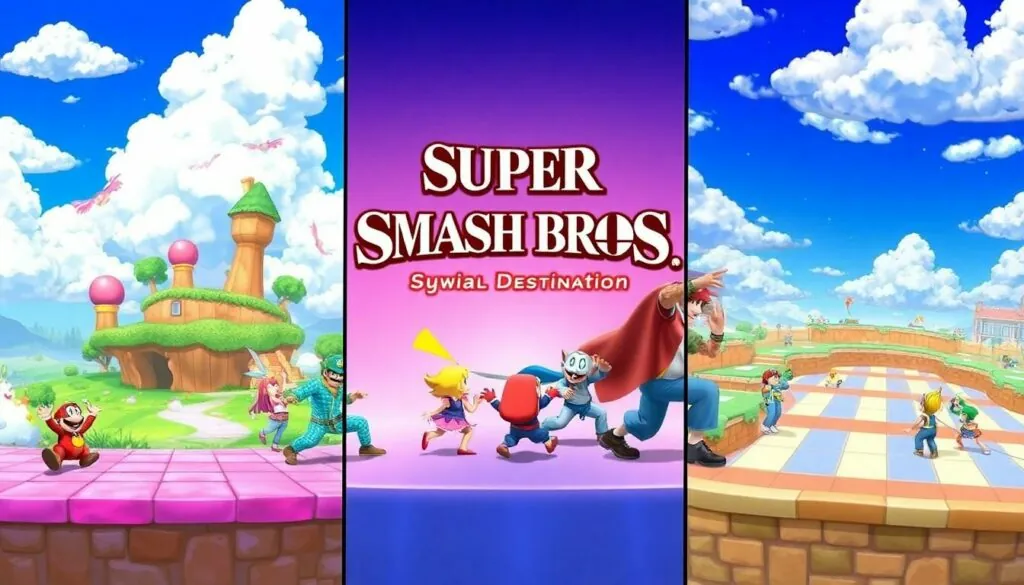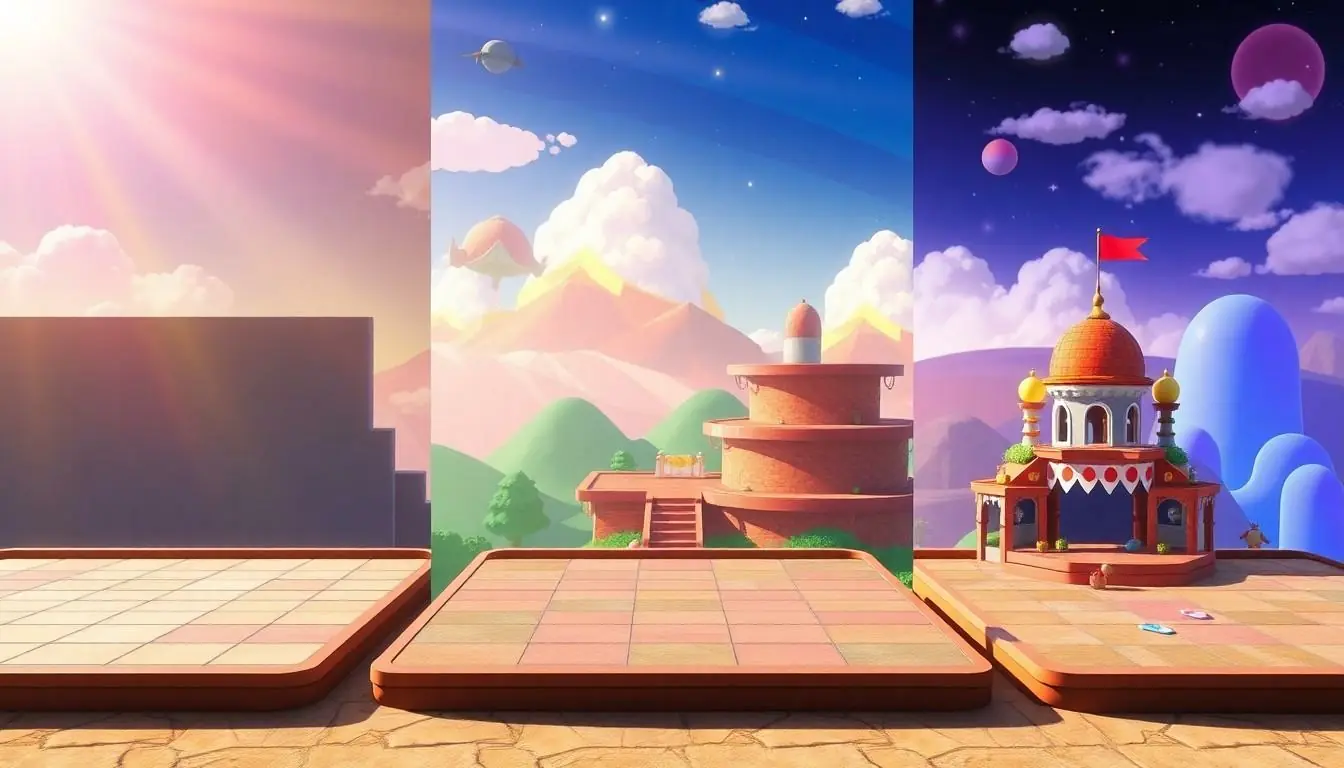Table of Contents
ToggleIn the vibrant world of Super Smash Bros, stages are more than just backdrops; they’re the battlegrounds where epic showdowns unfold. Each stage offers its own unique flair, from the nostalgic charm of Dream Land to the chaotic fun of Final Destination. Players don’t just choose a character; they pick a home turf that can turn the tide of battle in an instant.
Overview of Super Smash Bros Stages
Stages in Super Smash Bros play a crucial role in gameplay dynamics. Each stage features distinctive elements that affect player strategies. For instance, Dream Land includes platforms that can alter movement patterns during battles, while Final Destination is spacious with no hazards, allowing for pure combat focus.
The variety of stages enhances competitiveness. Some arenas, like Battlefield, possess multiple platforms that create opportunities for aerial combat, fostering an engaging playstyle. In contrast, stages such as Lylat Cruise introduce environmental challenges, including tilting that can impact character positioning.
Different stages cater to various character strengths. Characters with strong aerial attacks can thrive in stages with multiple platforms, whereas brawlers may prefer flat surfaces to maximize ground combat. Furthermore, the design of certain stages can dictate tactical approaches, making stage selection essential for competitive players.
Unique hazards define many stages, creating additional layers to combat. For example, the moving platforms on Yoshi’s Island can surprise opponents, while the lava on the stage of Castle Siege presents immediate risks. Understanding these nuances can significantly influence match outcomes.
Players often develop preferences for specific stages based on their character choices and play styles. Competitive settings frequently involve stage bans to enhance fairness. Each competition’s stage list may vary, reflecting the evolving meta of Super Smash Bros.
Overall, the diverse range of stages in Super Smash Bros contributes to the depth of the game, encouraging strategic thinking and adaptability among players.
Iconic Stages in Super Smash Bros
Iconic stages in Super Smash Bros offer players diverse environments, greatly impacting their gameplay experience and strategies.
Final Destination
Final Destination stands out as a fan favorite due to its simplicity and competitive nature. This stage features a flat, hazard-free platform that allows players to focus on pure combat mechanics. With no distractions from environmental features, players can concentrate on their character’s moves and attack patterns. Competitive players appreciate the balance and uniformity this stage provides, leading to matches that highlight skill and strategy. Overall, Final Destination’s straightforward design promotes thrilling one-on-one battles while accommodating all character types.
Battlefield
Battlefield introduces multi-tiered platforms that enhance aerial combat dynamics. This stage features three middle platforms, offering players opportunities for juggling opponents and executing combos. With its design, players can utilize both vertical and horizontal space effectively, creating varied strategies. The unique layout fosters intense engagements, as characters can leverage platform advantages for creative attacks. Competitive play often sees Battlefield as a prime choice, allowing for a mix of skillful maneuvers and quick reflexes during matches.
Dream Land
Dream Land is recognized for its charming aesthetics and strategic character advantages. The stage includes soft platforms that encourage players to adapt their movement and combat styles. Bright visuals complement its unique design, creating an engaging atmosphere for players. Players often exploit the stage’s platforms to avoid attacks while preparing their own. Hazards such as the puffball enemy can influence strategies during a match. As a result, Dream Land plays a significant role in shaping player interactions, making it a beloved choice among the community.
Unique Features of Stages
Stages in Super Smash Bros come with unique features that significantly influence gameplay. Each stage offers distinct elements, impacting player strategies and interactions.
Environmental Hazards
Environmental hazards add complexity to battles. For instance, Castle Siege features lava that can damage characters, forcing players to adapt quickly. Players often face challenges like falling debris on stages such as Hyrule Temple, necessitating strategic movement. Stages like Pokémon Stadium change their environment periodically, introducing different hazards throughout the match. These elements require players to remain vigilant and adjust their strategies, as the right timing can turn the tide of battle.
Moving Platforms
Moving platforms create dynamic gameplay opportunities. On Yoshi’s Island, platforms shift, altering positioning mid-fight, which affects attack sequences and escape routes. Battlefield’s multi-tiered layout enhances aerial combat, with platforms that can protect or expose players. Players benefit from such features, as they enable creative combos and tactics not available in stationary environments. Stages like Lylat Cruise introduce tilting platforms, adding an extra layer of unpredictability. Adapting to moving platforms can make a significant difference, influencing not only personal strategy but also the flow of the game.
Competitive Play Considerations
Choosing the right stage significantly influences competitive play in Super Smash Bros. Each stage presents unique characteristics that enhance strategic depth.
Stage Selection Strategy
Selecting stages requires careful consideration of character strengths. Players often prioritize stages that complement their abilities. For example, a character excelling in aerial combat benefits from platforms found on Battlefield. Some players develop preferences based on play styles, leading to stage bans for balance. Teams often discuss strategies that maximize advantages based on their chosen characters and the stage layout. By assessing stage attributes, players optimize their combat effectiveness.
Impact on Gameplay
Stages impact gameplay through environmental features and hazards. Unique elements, like moving platforms on Yoshi’s Island and hazards such as lava on Castle Siege, demand quick adaptations. Players adjusting to shifting platforms on Lylat Cruise enhance their maneuverability. The dynamics of changing stage environments, like those on Pokémon Stadium, introduce new strategies throughout matches. Each stage’s design inherently creates different opportunities and risks, altering players’ tactics. As a result, understanding stage characteristics is vital for success in competitive settings.
Conclusion
The diverse stages in Super Smash Bros significantly enhance the gaming experience. Each stage offers unique features that challenge players to adapt their strategies and capitalize on their character’s strengths. This dynamic environment fosters creativity and competitive spirit, making stage selection just as crucial as character choice.
Players who understand the nuances of each stage can gain a tactical advantage in battles. The interplay between stage characteristics and player strategies adds depth to the game. As players continue to explore and master these stages, they’ll discover new ways to elevate their gameplay and engage in thrilling matches.








